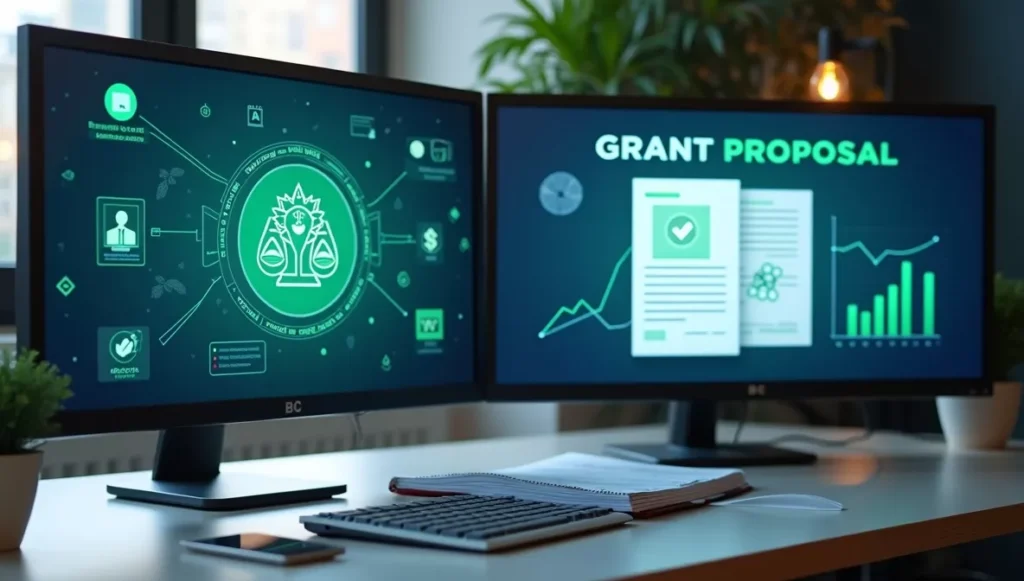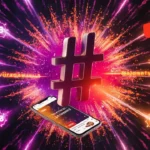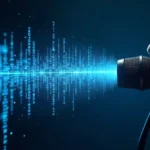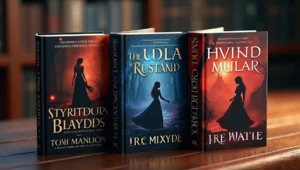Why Grant Writing Feels Like Climbing a Mountain
Have you ever stared at a blank page, knowing you need to write a grant proposal but having no idea where to start? You’re not alone! Every year, millions of nonprofits, researchers, and passionate changemakers face the same challenge. They have amazing ideas that could change the world, but they struggle to put those ideas into words that funders want to read.
- Why Grant Writing Feels Like Climbing a Mountain
- What Is Grant Writing? (And Why Is It So Important?)
- Why Is Grant Writing So Difficult?
- 💖 You Might Also Like
- How Can AI Help with Grant Writing?
- ✨ More Stories for You
- The Best AI Tools for Writing Grant Proposals
- 1. Claude (by Anthropic)
- 2. ChatGPT (by OpenAI)
- 🌟 Don’t Miss These Posts
- 3. Grantable
- 4. Jasper AI
- 5. Copy.ai
- 6. Wordtune
- 7. Grammarly
- 8. Writesonic
- 9. Rytr
- 10. Notion AI
- How to Choose the Right AI Tool for Your Needs
- Best Practices for Using AI in Grant Writing
- 1. Start with Good Information
- 2. Be Specific with Your Prompts
- 3. Always Review and Edit
- 4. Maintain Your Authentic Voice
- 5. Use AI for Multiple Purposes
- 6. Combine Multiple Tools
- 7. Build a Library of Content
- 8. Stay Ethical and Honest
- 9. Learn and Improve
- 10. Keep the Human Touch
- Common Mistakes to Avoid When Using AI for Grant Writing
- Real-World Success Stories
- The Future of AI in Grant Writing
- Getting Started Today: Your Action Plan
- Conclusion: Your Grant Writing Journey with AI
Writing grant proposals is hard work. Really hard work. You need to tell your story perfectly, use the right words, follow strict rules, and somehow convince strangers to give you money for your dreams. It’s like trying to solve a puzzle while juggling and riding a unicycle at the same time!
But here’s the exciting news: artificial intelligence (AI) has arrived to help. Think of AI as your super-smart writing buddy who never gets tired, never runs out of ideas, and is always ready to help you shine.
In this guide, we’ll explore the best AI tools that can help you write winning grant proposals. Whether you’re running a small nonprofit from your kitchen table, conducting groundbreaking research at a university, or starting a community project in your neighborhood, these AI tools can make your grant writing journey much easier.
Let’s dive in and discover how AI can transform your grant writing from a scary mountain into a pleasant walk in the park!
What Is Grant Writing? (And Why Is It So Important?)
Before we talk about AI tools, let’s make sure everyone understands what grant writing actually is.
Imagine you have a wonderful idea. Maybe you want to start a program that teaches kids how to read, or perhaps you want to research a cure for a disease, or you dream of building a community garden. These ideas need money to become real, right?
Grant writing is the art of asking organizations (called funders) for money to make your ideas happen. But you can’t just say “Please give me money!” You need to write a detailed document called a grant proposal that explains:
- What you want to do
- Why it matters
- How you’ll do it
- How much money you need
- What results you’ll achieve
Think of it like writing a really important essay, but instead of getting a grade, you might get thousands or even millions of dollars to change the world!
Grant writing matters because it helps good ideas become reality. Without grants, many amazing projects would never happen. Schools wouldn’t get new programs, scientists couldn’t do important research, and communities would miss out on helpful services.
Why Is Grant Writing So Difficult?
Now you might wonder: if grant writing is just writing, why do people find it so hard?
💖 You Might Also Like
Great question! Here are the main reasons:
Time-Consuming: Writing a single grant proposal can take 20 to 40 hours or even more. That’s like working a full week just on one application!
Technical Language: Grants require special words and phrases that sound formal and professional. You can’t write like you’re texting your friend.
Strict Rules: Each funder has different requirements. One might want five pages, another wants twenty. One wants specific sections, another wants everything in a different order. It’s like each funder speaks a slightly different language!
Data and Evidence: You need to include facts, statistics, and proof that your idea will work. This means lots of research and number-crunching.
Competition: Hundreds or thousands of other people might be applying for the same grant. Your proposal needs to stand out like a bright star in a dark sky.
Rejection Hurts: Even experienced grant writers get rejected often. It’s discouraging to spend weeks on a proposal and then hear “no.”
Multiple Versions: You often need to write several proposals to different funders, each slightly different. It’s exhausting!
This is exactly where AI comes to the rescue. Like a superhero swooping in to save the day, AI tools can help you with each of these challenges.
How Can AI Help with Grant Writing?
AI is like having a really smart assistant who has read millions of grant proposals and knows exactly what works. Here’s what AI can do for you:
Speed Up Writing: AI can draft sections of your proposal in minutes instead of hours. It’s like having a turbo button for your brain!
Generate Ideas: Stuck and don’t know what to write? AI can suggest ideas, phrases, and approaches you might never have thought of.
Improve Your Language: AI can take your simple words and make them sound more professional and impressive without losing your authentic voice.
Customize for Different Funders: Need to adjust your proposal for different funders? AI can help you create multiple versions quickly.
Check Your Grammar: AI catches spelling mistakes, grammar errors, and awkward sentences that might make your proposal look unprofessional.
✨ More Stories for You
Research Assistance: Some AI tools can help you find statistics, data, and evidence to support your proposal.
Fight Writer’s Block: When you’re staring at a blank page, AI can help you get started by giving you a first draft to work with.
Save Energy for Strategy: When AI handles the heavy writing work, you can focus your brain power on strategy and creativity.
Think of AI as your writing partner, not your replacement. You’re still the expert on your project and your passion. AI just helps you express it better and faster.
The Best AI Tools for Writing Grant Proposals
Now for the part you’ve been waiting for! Let’s explore the best AI tools that can help you write amazing grant proposals. We’ll look at each tool, what makes it special, and who should use it.
1. Claude (by Anthropic)
What It Is: Claude is a powerful AI assistant that excels at understanding context and writing detailed, nuanced content.
Why It’s Great for Grants:
Claude is particularly good at understanding complex information and turning it into clear, compelling narratives. When you’re writing a grant proposal, you often need to explain complicated ideas in simple terms that anyone can understand. Claude excels at this!
Key Features:
- Handles very long documents (up to 200,000 words of context!)
- Excellent at following specific formatting requirements
- Great at maintaining a consistent tone throughout long documents
- Can analyze existing successful grant proposals and mimic their style
- Understands nuance and can write persuasively without sounding pushy
Best For:
- Research grant proposals that require detailed explanations
- Long, complex grant applications
- Organizations that need to maintain a specific professional tone
- Anyone who wants thoughtful, well-reasoned content
How to Use It: You can provide Claude with information about your project, the funder’s requirements, and any specific guidelines. Claude can then help you draft sections, improve existing text, or even review your entire proposal for clarity and impact.
Price: Claude offers both free and paid tiers. The free version is quite generous and perfect for getting started.
2. ChatGPT (by OpenAI)
What It Is: ChatGPT is probably the most famous AI tool in the world right now. It’s like having a conversation with a very knowledgeable friend.
Why It’s Great for Grants:
ChatGPT is incredibly versatile and user-friendly. It can help with every stage of grant writing, from brainstorming to final edits. The conversational interface makes it easy to refine your ideas through back-and-forth dialogue.
🌟 Don’t Miss These Posts
Key Features:
- Very intuitive and easy to use
- Great for brainstorming and generating ideas
- Can create outlines and structure for your proposal
- Helps with research by providing background information
- Excellent at simplifying complex concepts
- Can adapt to different writing styles
Best For:
- Beginners who are new to AI
- Quick drafts and brainstorming sessions
- Smaller nonprofits with limited budgets
- People who like interactive, conversational tools
How to Use It: Start by telling ChatGPT about your project and what you need. You can ask it to create an outline, draft specific sections, or improve paragraphs you’ve already written. The more specific your questions, the better the results!
Price: Free version available with basic features. ChatGPT Plus ($20/month) offers faster responses and access to advanced features.
3. Grantable
What It Is: Grantable is an AI tool specifically designed for grant writing. It’s like ChatGPT’s cousin who went to school just to learn about grants!
Why It’s Great for Grants:
Unlike general AI tools, Grantable was built from the ground up for grant writers. It understands the specific language, structure, and requirements of grant proposals.
Key Features:
- Purpose-built database of grant writing best practices
- Templates specifically for different types of grants
- Understands common grant sections (needs statement, methodology, evaluation, budget narrative)
- Can pull from your organization’s previous proposals
- Tracks different versions for different funders
- Built-in collaboration features for team grant writing
Best For:
- Professional grant writers
- Organizations that apply for many grants each year
- Teams that work together on proposals
- Anyone who wants a tool made specifically for grant writing
How to Use It: Upload information about your organization and project. Grantable will help you create drafts tailored to specific grant requirements. You can build a library of content that can be reused and adapted for different applications.
Price: Subscription-based pricing, typically starting around $30-50/month. Some plans offer team features.
4. Jasper AI
What It Is: Jasper is a versatile AI writing assistant that’s popular in marketing but also excellent for grant writing.
Why It’s Great for Grants:
Jasper is particularly good at creating compelling, persuasive content that captures attention. Since grant proposals need to convince funders, Jasper’s persuasive writing capabilities are perfect.
Key Features:
- Over 50 writing templates (including ones adaptable for grants)
- “Boss Mode” lets you command the AI with specific instructions
- Can maintain your organization’s unique voice and style
- Excellent at creating emotional, compelling narratives
- Good for writing executive summaries and letters of inquiry
- Can generate content in multiple languages
Best For:
- Organizations that need persuasive, compelling narratives
- Nonprofits that write many different types of documents
- International organizations needing multiple languages
- Groups that value strong storytelling
How to Use It: Train Jasper on your organization’s voice by providing examples of your best writing. Then use specific templates or commands to generate grant content. Jasper works best when you give it detailed instructions about tone and style.
Price: Plans start around $49/month. Higher tiers offer more words and advanced features.
5. Copy.ai
What It Is: Copy.ai is a user-friendly AI writing tool that helps create various types of content quickly.
Why It’s Great for Grants:
Copy.ai is excellent for generating multiple versions of the same content, which is perfect when you need to customize proposals for different funders.
Key Features:
- Simple, clean interface
- Great for creating multiple variations of content
- Helpful for writing shorter grant components like executive summaries
- Can help with email communications to funders
- Offers a “freestyle” mode for unrestricted writing
- Good for overcoming writer’s block
Best For:
- Small nonprofits and individual researchers
- People who need quick drafts
- Those who apply to multiple funders with similar content
- Budget-conscious organizations
How to Use It: Input your key points and requirements. Copy.ai will generate several variations, and you can pick the one that resonates best or combine elements from multiple versions.
Price: Free plan available with limited words. Pro plans start around $49/month.
6. Wordtune
What It Is: Wordtune is focused on rewriting and improving existing text rather than generating new content from scratch.
Why It’s Great for Grants:
Sometimes you know what you want to say but struggle with how to say it professionally. Wordtune excels at taking your rough ideas and polishing them into professional grant language.
Key Features:
- Rewrites sentences to be more clear, engaging, or formal
- Offers multiple rewrite suggestions for each sentence
- Can expand or shorten text
- Helps make your writing more concise
- Great for editing and refinement
- Works as a browser extension for easy access
Best For:
- Editing and improving existing drafts
- People who can write rough drafts but struggle with professional polish
- Quick improvements to specific sections
- Organizations with drafts that need refinement
How to Use It: Write your draft first, then use Wordtune to improve each section. Highlight sentences you want to improve, and Wordtune will offer several professional alternatives.
Price: Free version available with limited rewrites. Premium plans start around $10/month.
7. Grammarly
What It Is: While primarily known as a grammar checker, Grammarly has evolved to include AI-powered writing suggestions.
Why It’s Great for Grants:
Grant proposals must be error-free. A single typo can make you look unprofessional. Grammarly ensures your proposal is polished and professional.
Key Features:
- Catches grammar, spelling, and punctuation errors
- Suggests improvements for clarity and conciseness
- Checks tone and formality level
- Identifies repetitive words and phrases
- Plagiarism detection (important for grant writing!)
- Style guide features for team consistency
Best For:
- Final proofreading and editing
- Teams that need consistent writing style
- Anyone concerned about grammar and professionalism
- Organizations that want to ensure error-free proposals
How to Use It: Write your draft in any tool, then paste it into Grammarly or use the browser extension. Review suggestions and make improvements. Use before submitting any grant proposal!
Price: Free version catches most errors. Premium ($12-15/month) offers advanced suggestions and style features.
8. Writesonic
What It Is: Writesonic is an AI writing platform that offers various content creation tools.
Why It’s Great for Grants:
Writesonic includes specific tools for long-form content and can help with different sections of a grant proposal.
Key Features:
- Long-form article writer (great for detailed grant sections)
- Can generate content outlines
- Includes research capabilities
- Offers a “Sonic Editor” for editing and improving drafts
- Can create content briefs
- Multiple tone options
Best For:
- Creating detailed needs statements and literature reviews
- Organizations that need research support
- Writers who like structured, outline-based approaches
- Budget-conscious users (offers generous free tier)
How to Use It: Start with the outline generator to structure your proposal. Then use the long-form writer for detailed sections. Finally, polish with the Sonic Editor.
Price: Free plan available. Premium plans start around $20/month.
9. Rytr
What It Is: Rytr is an affordable AI writing assistant with multiple use cases.
Why It’s Great for Grants:
Rytr offers excellent value for money, making professional AI assistance accessible to even the smallest nonprofits and individual researchers.
Key Features:
- Very affordable pricing
- Over 40 use cases and templates
- Multiple tone options (formal, professional, convincing)
- Can write in 30+ languages
- Built-in plagiarism checker
- Simple, straightforward interface
Best For:
- Small organizations with tiny budgets
- Individual researchers
- International organizations
- People new to AI who want low-risk entry point
How to Use It: Select the appropriate use case (like “blog idea & outline” which adapts well to grant sections), input your key points, and let Rytr generate content. Refine as needed.
Price: Free plan allows 10,000 characters per month. Unlimited plan is only $9/month!
10. Notion AI
What It Is: Notion AI is integrated into the popular Notion workspace platform.
Why It’s Great for Grants:
If you already use Notion for project management, having AI built right in makes grant writing seamlessly integrate with your workflow.
Key Features:
- Works directly in your Notion workspace
- Can analyze and summarize existing documents
- Helps with brainstorming and outlining
- Creates action items and to-do lists
- Can translate content
- Seamlessly integrates with your existing notes and documents
Best For:
- Organizations already using Notion
- Teams that want grant writing integrated with project management
- People who value having everything in one place
- Collaborative grant writing projects
How to Use It: Create your grant proposal pages in Notion, then use Notion AI to draft sections, improve text, and generate ideas—all without leaving your workspace.
Price: Requires Notion subscription. AI add-on is around $10/month per user.
How to Choose the Right AI Tool for Your Needs
With so many options, how do you pick the right one? Here are some questions to help you decide:
What’s Your Budget?
If money is tight: Start with free tools like ChatGPT, Rytr’s free plan, or Grammarly’s basic version.
If you have some budget: Consider mid-range options like Grantable, Copy.ai, or Writesonic.
If budget isn’t a concern: Go for premium versions of tools like Claude, ChatGPT Plus, or Jasper for the best features.
How Often Do You Write Grants?
Occasionally (1-5 per year): Free or basic tools like ChatGPT or Claude will work great.
Regularly (6-20 per year): Invest in a specialized tool like Grantable or a versatile option like Jasper.
Frequently (20+ per year): Consider multiple tools—perhaps Grantable for drafting, plus Grammarly for editing.
What’s Your Experience Level?
Beginner: Start with user-friendly options like ChatGPT or Copy.ai.
Intermediate: Try more sophisticated tools like Claude or Jasper.
Expert: Combine specialized tools like Grantable with premium editing tools for maximum efficiency.
What Type of Grants Do You Write?
Research grants: Claude and ChatGPT excel at handling complex, technical content.
Nonprofit program grants: Grantable and Jasper are great for compelling narratives.
Small community grants: Simple, affordable tools like Rytr or Copy.ai work perfectly.
Do You Work Alone or in a Team?
Solo: Any tool works, but consider ease of use.
Team: Look for collaboration features (Grantable, Notion AI, or tools with sharing capabilities).
What Stage of Writing Do You Need Most Help With?
Getting started: ChatGPT and Copy.ai for brainstorming.
Drafting: Claude, Grantable, or Jasper for full sections.
Editing: Wordtune and Grammarly for polish.
All stages: Comprehensive tools like Claude or ChatGPT Plus.
Best Practices for Using AI in Grant Writing
AI is powerful, but you need to use it wisely. Here are essential tips for getting the best results:
1. Start with Good Information
Remember: garbage in, garbage out! AI can only work with what you give it. Before using AI:
- Clearly define your project goals
- Gather all relevant data and statistics
- Collect stories and examples
- Review the funder’s guidelines carefully
- Organize your thoughts
The better your input, the better the AI’s output!
2. Be Specific with Your Prompts
Instead of saying: “Write a grant proposal.”
Say this: “Write a compelling needs statement for a youth literacy program serving 100 children ages 8-12 in a low-income urban neighborhood. Include statistics about literacy rates in our area and explain why early intervention matters.”
The more specific you are, the better your results will be!
3. Always Review and Edit
Never copy and paste AI content directly into your final proposal. Always:
- Read through everything carefully
- Check facts and statistics
- Add your personal touch and authentic voice
- Ensure it matches your organization’s style
- Verify that it addresses all requirements
Think of AI as your first draft generator, not your final draft writer!
4. Maintain Your Authentic Voice
Funders can tell when something sounds generic or robotic. Use AI to:
- Overcome writer’s block
- Improve clarity
- Find better ways to express your ideas
But don’t let AI erase your passion and personality!
5. Use AI for Multiple Purposes
AI can help with more than just writing:
- Research funders and grant opportunities
- Analyze successful proposals
- Create project timelines
- Draft budget narratives
- Write thank-you letters
- Prepare reports for funders
Think creatively about how AI can support your entire grant process!
6. Combine Multiple Tools
You don’t have to pick just one! Many successful grant writers use combinations:
- ChatGPT for brainstorming and rough drafts
- Claude for detailed, complex sections
- Grammarly for final editing
- Wordtune for polishing specific sentences
Use each tool for what it does best!
7. Build a Library of Content
Create a collection of:
- Your organization’s mission and history
- Program descriptions
- Success stories and testimonials
- Key statistics and data
- Past proposals (especially successful ones)
Feed this information to AI tools to get more accurate, on-brand content!
8. Stay Ethical and Honest
Never use AI to:
- Make up statistics or facts
- Exaggerate your capabilities
- Plagiarize from other organizations
- Create misleading information
- Hide important details
Integrity matters more than anything!
9. Learn and Improve
After each proposal:
- Note what worked well with AI
- Identify areas where you needed more human editing
- Save particularly effective prompts
- Build on your successes
You’ll get better at using AI over time!
10. Keep the Human Touch
Remember that grant reviewers are human beings. They want to:
- Feel your passion
- Understand your vision
- See your expertise
- Connect with your story
AI helps with the mechanics, but you provide the heart!
Common Mistakes to Avoid When Using AI for Grant Writing
Even experienced users make these mistakes. Here’s how to avoid them:
Mistake #1: Trusting AI Completely
AI can make mistakes, invent facts, or misunderstand requirements. Always fact-check everything!
Mistake #2: Using Generic Prompts
Vague instructions produce vague content. Be specific about what you need!
Mistake #3: Ignoring Funder Guidelines
AI doesn’t automatically know each funder’s specific requirements. You must provide this information!
Mistake #4: Skipping Human Review
Every AI-generated proposal needs human eyes before submission. No exceptions!
Mistake #5: Forgetting to Customize
Content generated for one funder might not work for another. Always customize!
Mistake #6: Overlooking Your Unique Story
AI can’t know your organization’s unique experiences and impacts. You must add these!
Mistake #7: Relying Only on Free Versions
Sometimes investing in premium features saves enough time to justify the cost.
Mistake #8: Not Practicing First
Don’t use AI for the first time on your most important proposal. Practice first!
Mistake #9: Expecting Perfection Immediately
There’s a learning curve. Your first AI-assisted proposals might not be perfect. Keep practicing!
Mistake #10: Forgetting About Data Privacy
Be careful about putting sensitive information into AI tools. Check privacy policies!
Real-World Success Stories
Let’s look at how real organizations are using AI for grant writing:
The Small Community Nonprofit
A tiny animal shelter with just two staff members struggled to find time for grant writing. Using ChatGPT and Grammarly, they:
- Reduced grant writing time from 30 hours to 12 hours per proposal
- Improved their success rate from 20% to 40%
- Applied to twice as many funders
- Secured $85,000 in new funding in their first year using AI
The University Research Team
A medical research team needed to write complex grant proposals to federal agencies. Using Claude, they:
- Improved the clarity of their technical explanations
- Created better literature reviews faster
- Customized proposals for different agencies more efficiently
- Won their first major federal grant worth $2.3 million
The Solo Grant Writer
A freelance grant writer serving multiple small nonprofits used a combination of Grantable and Jasper to:
- Double her client capacity from 3 to 6 organizations
- Maintain high-quality proposals
- Reduce burnout and stress
- Increase her income by 75%
The International Development Organization
A global nonprofit working in multiple countries used Copy.ai and Notion AI to:
- Translate and adapt proposals for different regions
- Maintain consistent messaging across continents
- Coordinate grant writing among team members in different time zones
- Secure funding 30% faster than before
These stories show that AI works for organizations of all sizes and types!
The Future of AI in Grant Writing
What can we expect in the coming years?
More Specialized Tools
We’ll likely see more AI tools built specifically for grant writing, with features like:
- Automatic funder matching
- Real-time compliance checking
- Built-in budget calculators
- Success prediction models
Better Understanding of Requirements
Future AI will better understand complex grant requirements and automatically format proposals correctly.
Integration with Grant Management Systems
AI will integrate seamlessly with platforms where you submit grants, streamlining the entire process.
Improved Collaboration Features
Teams will be able to work together more effectively with AI mediating and coordinating contributions.
More Affordable Options
As AI becomes more common, prices will likely decrease, making sophisticated tools accessible to everyone.
Better Personalization
AI will learn your organization’s voice and style more effectively, producing content that feels authentically yours.
Enhanced Research Capabilities
AI will help identify the best funders for your projects and provide intelligence about what they’re looking for.
The future looks bright for grant writers willing to embrace these tools!
Getting Started Today: Your Action Plan
Ready to use AI for your grant writing? Here’s your step-by-step plan:
Step 1: Start Simple (Week 1)
- Create a free ChatGPT account
- Write down your project idea in simple terms
- Ask ChatGPT to help you create an outline for a grant proposal
- Practice with prompts and see what you get
Step 2: Organize Your Information (Week 2)
- Gather all information about your organization and project
- Create a document with your mission, vision, and key statistics
- Collect success stories and testimonials
- Review grant guidelines from a funder you’re interested in
Step 3: Try Different Tools (Week 3)
- Experiment with 2-3 different AI tools
- Use each for the same task to compare results
- Note which tool feels most comfortable
- Check pricing and features
Step 4: Create Your First AI-Assisted Draft (Week 4)
- Choose one tool to focus on
- Create a complete first draft using AI assistance
- Review and edit thoroughly
- Add your personal touches and authentic voice
Step 5: Get Feedback (Week 5)
- Show your draft to colleagues or mentors
- Ask for honest feedback
- Note where AI worked well and where it didn’t
- Revise based on feedback
Step 6: Refine Your Process (Week 6)
- Document what prompts worked best
- Create templates for future use
- Decide if you want to invest in premium features
- Build your personal AI-assisted grant writing system
Step 7: Submit and Learn (Ongoing)
- Submit your proposal
- Regardless of outcome, analyze what worked
- Continuously improve your AI usage
- Share learnings with others in your field
Remember: you don’t need to be an AI expert to benefit from these tools. Start small, practice regularly, and gradually build your skills!
Conclusion: Your Grant Writing Journey with AI
We’ve covered a lot of ground in this guide! Let’s recap the most important points:
Key Takeaways:
- AI is a powerful tool that can help you write grant proposals faster and better
- There are many AI tools available, from free options to specialized platforms
- The best tool depends on your budget, frequency, and type of grant writing
- AI should assist your writing, not replace your authentic voice and expertise
- Success requires combining AI efficiency with human insight and passion
- Always review, edit, and customize AI-generated content
- Start simple and build your skills over time
- Use AI ethically and honestly
Remember: Grant writing is ultimately about connecting people who have resources with people who have great ideas. AI helps you build that bridge more efficiently, but you’re still the architect of that connection.
Your passion for your cause, your understanding of your community’s needs, your vision for change—these are things AI cannot replicate. What AI can do is help you express these things more clearly, professionally, and persuasively.
Think of AI as your writing partner on this journey. It’s like having a skilled friend who’s always available to help you brainstorm, draft, and polish your proposals. But you’re still the leader of your project, the expert on your cause, and the person who cares most deeply about your mission.
The world needs your ideas. Communities need your programs. People need the solutions you’re creating. Don’t let the challenge of grant writing hold you back from pursuing the funding you deserve.
With AI tools now available to everyone, there’s never been a better time to pursue your grant writing goals. Whether you’re writing your first proposal or your hundredth, these tools can help you work smarter, faster, and more effectively.
So take that first step today. Choose an AI tool that fits your needs, gather your information, and start writing. Your next great grant proposal is waiting to be written—and now you have the tools to make it happen!
The future of grant writing is here, and it’s more accessible than ever before. Your community’s future projects, your research breakthroughs, your programs that change lives—they all start with a well-written grant proposal.
You’ve got the passion. You’ve got the ideas. Now you’ve got the AI tools to help you succeed.
What are you waiting for? Your grant writing journey starts now!
Final Tip: Bookmark this guide and refer back to it as you explore different AI tools. Grant writing is a skill that improves with practice, and using AI effectively is no different. Be patient with yourself, celebrate small wins, and keep pushing forward. You’ve got this!















